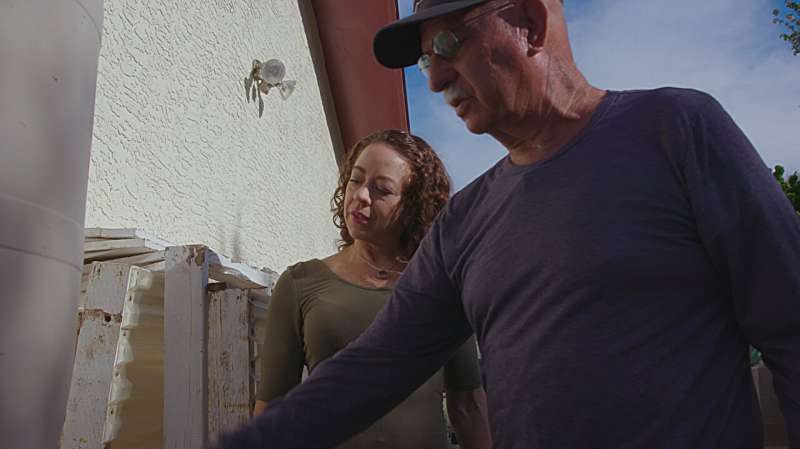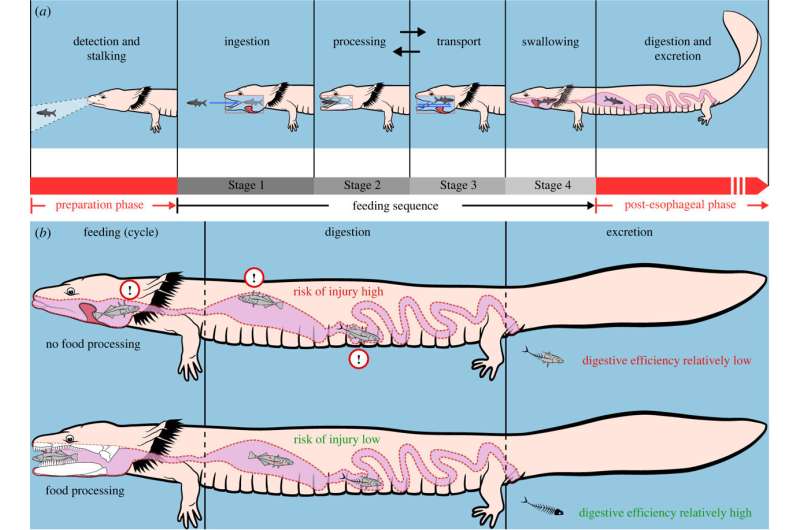From the skies to your roof, what does a raindrop pick up along the way?

As clean water access becomes more difficult in the American Southwest, more people are turning to harvesting rainwater as a solution, especially in Arizona. But with little data on contaminants in harvested rainwater, communities are wondering how clean it really is.
To answer that question, a University of Arizona-led community partnership, called Project Harvest, has for the past six years collected harvested rainwater samples and analyzed them for a variety of contaminants.
Mónica Ramírez-Andreotta, an associate professor in the Department of Environmental Science, created Project Harvest with a team of researchers in partnership with Sonora Environmental Research Institute Inc. and communities throughout Arizona. The work is published in the Journal of Research in Science Teaching.
Across a suite of papers, Project Harvest observed that samples contained lead and arsenic; micropollutants such as per- and polyfluoroalkyl substances—chemicals known as PFAS—and pesticides; and microbial pollutants such as E. coli and total coliform.
As a co-created research program, Project Harvest worked with community members to train, collect and translate all of their findings into bilingual interactive visualizations, available to the public.
"These individuals are trying to do the right thing—conserve water, grow their own healthy food, and reduce their carbon footprint," Ramírez-Androetta said. "Pollution interferes with these environmental public health interventions, so people want to know what the quality of the water is and how they can use it."
Contamination season
From lead to pesticides and even E. coli, all findings shared a common thread: increased contaminants during monsoon season, possibly due to increased dust activity.
One paper detected lead and arsenic in rooftop harvested rainwater in the partnering communities. While most levels were within the EPA's enforceable drinking water standards, no level of exposure to lead and arsenic is safe for humans.
Dust-carrying contaminants could also be the cause for increased prometon and simazine pesticides during monsoon season. Prometon is commonly used in areas along paved roads and parking lots.
Perfluorooctanoic acid, known as PFOA, and perfluorooctane sulfonic acid, or PFOS, were also observed in samples across the state in concentrations greater than the EPA's most recent drinking water health advisories. PFOA and PFOS are human-made surfactants often called "forever chemicals" due to their longevity in nature.
Presence of E. coli in harvested rainwater was relatively low in this study—most were under the levels deemed safe by the Environmental Protection Agency. However, total coliforms, a mostly harmless group of bacteria often spread through animal and human waste, were detected more often at concentrations above the same standards.
Location, location, location
Other than season, location is another major factor for most contaminant concentrations, and with regard to lead and arsenic, this is mainly related to government and industrial sites. In select communities, as distance from these sites increased, researchers observed a significant decrease in lead and arsenic concentrations in rooftop-harvested rainwater.
Additionally, roof-harvested rainwater samples had greater PFOA, perfluorononanoic acid and perfluorobutane sulfonic acid mean concentrations than the control rainwater, indicating the contamination is most likely tied to industrial activities. However, the exact sources cannot be confirmed.
Working with the community, for the community
By partnering with communities that are disproportionately impacted by climate change and pollution, consisting of more than 150 participants, Project Harvest collected and analyzed over 3,000 rainwater samples.
Communication and training during the program were led by promotoras, or community members with an understanding of community dynamics and local health and social issues. The promotoras served as cultural knowledge brokers between UArizona and the larger groups of community scientists.
"This project would not have been possible without our community scientist partners and project promotoras who maintained contact with the community scientists," Ramírez-Andreotta said. "They shared their expertise and experiences with us, which in turn improved our methodologies, reduced program barriers, increased access to the program and enhanced data-sharing strategies."
Setting the foundation for co-created research
The bottom line is that contaminants can be observed in rooftop harvested rainwater. Depending on the contaminant, concentration and how someone uses their harvested rainwater, measures such as filtering and equipment cleaning are recommended. While individuals can try to prevent contamination, Ramírez-Andreotta said it is also important to think about the source of the contaminants.
"In most cases, it is not the individual behavior that's leading to these concentrations in the rainwater," Ramírez-Andreotta said. "The burden is being placed on them, but it's coming from these broader systems."
In addition to the data, Ramírez-Andreotta said this study shows how building relationships with communities will support environmental health literacy and nurture a new or renewed relationship with science.
"Co-created community science is a model that can not only transform science education and teaching and meaningfully connect with communities at risk," Ramírez-Andreotta wrote, "it can be used to build capacity, inform decision-making, and address climate change and water scarcity challenges."
More information: Mónica D. Ramírez‐Andreotta et al, Co‐created environmental health science: Identifying community questions and co‐generating knowledge to support science learning, Journal of Research in Science Teaching (2023). DOI: 10.1002/tea.21882





